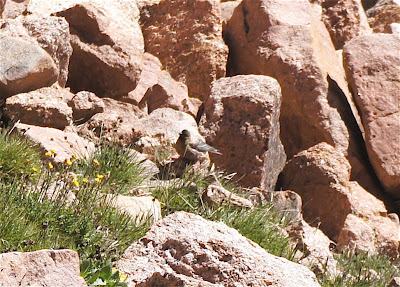Scientific Name: Anthus novaeseelandiae
Population Estimate: Unknown, but Least Concern status
Range / Habitat: Native to New Zealand. Found year-round in grassland and open areas throughout both islands.
Field Notes: Slender, long-tailed, ground-favoring songbird. Prominent white eyebrow. Head and upperparts brown, underparts white with streaked brown. Frequently flicks tail up and down. Eurasian Skylark similar but with with small crest, less distinct eyebrow, M-shaped wings in flight, and a call which is a torrent of trills and runs.
Personal Notes: Seen on the east coast of the Wairarpa. Formerly lumped as Richard's Pipit or Australasian Pipit. Not all sources spilt the New Zealand type. Maori name Pihoihoi.































